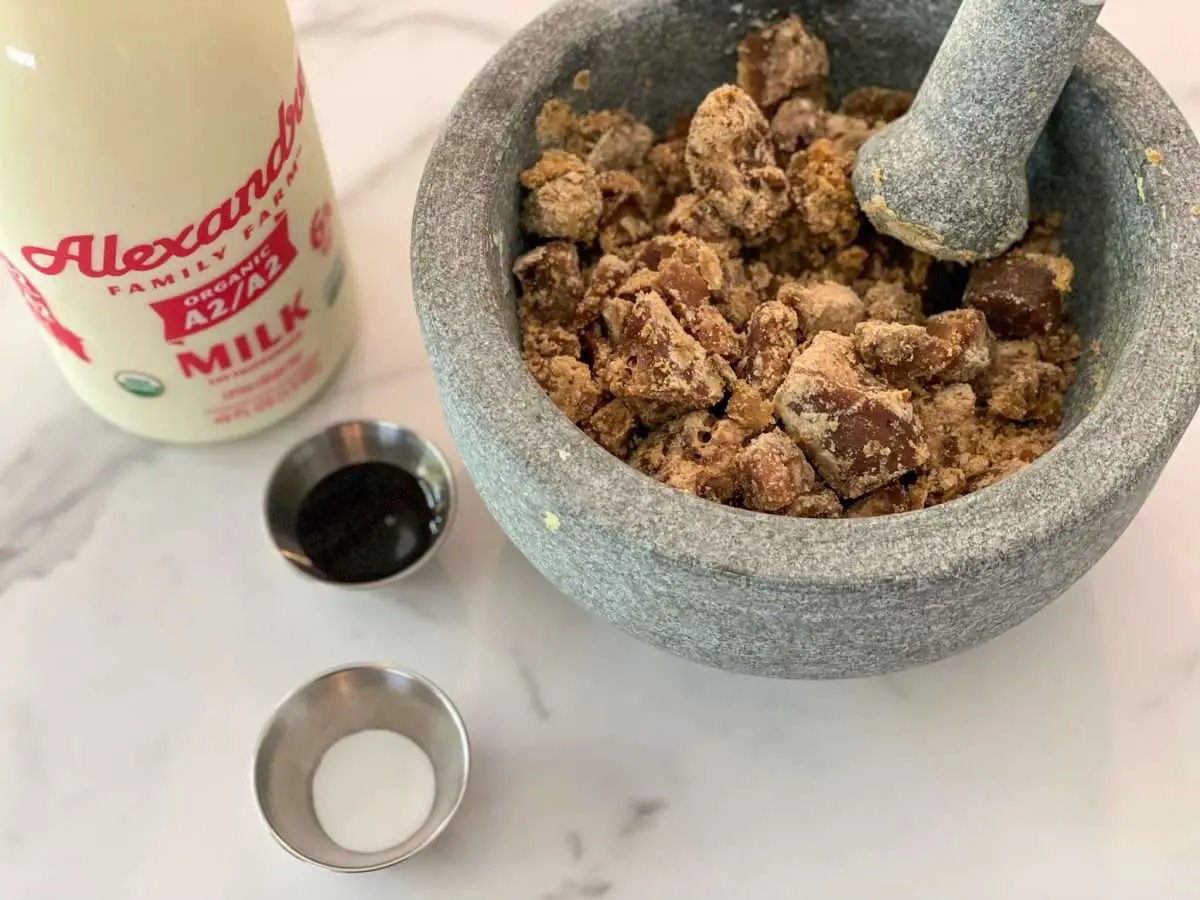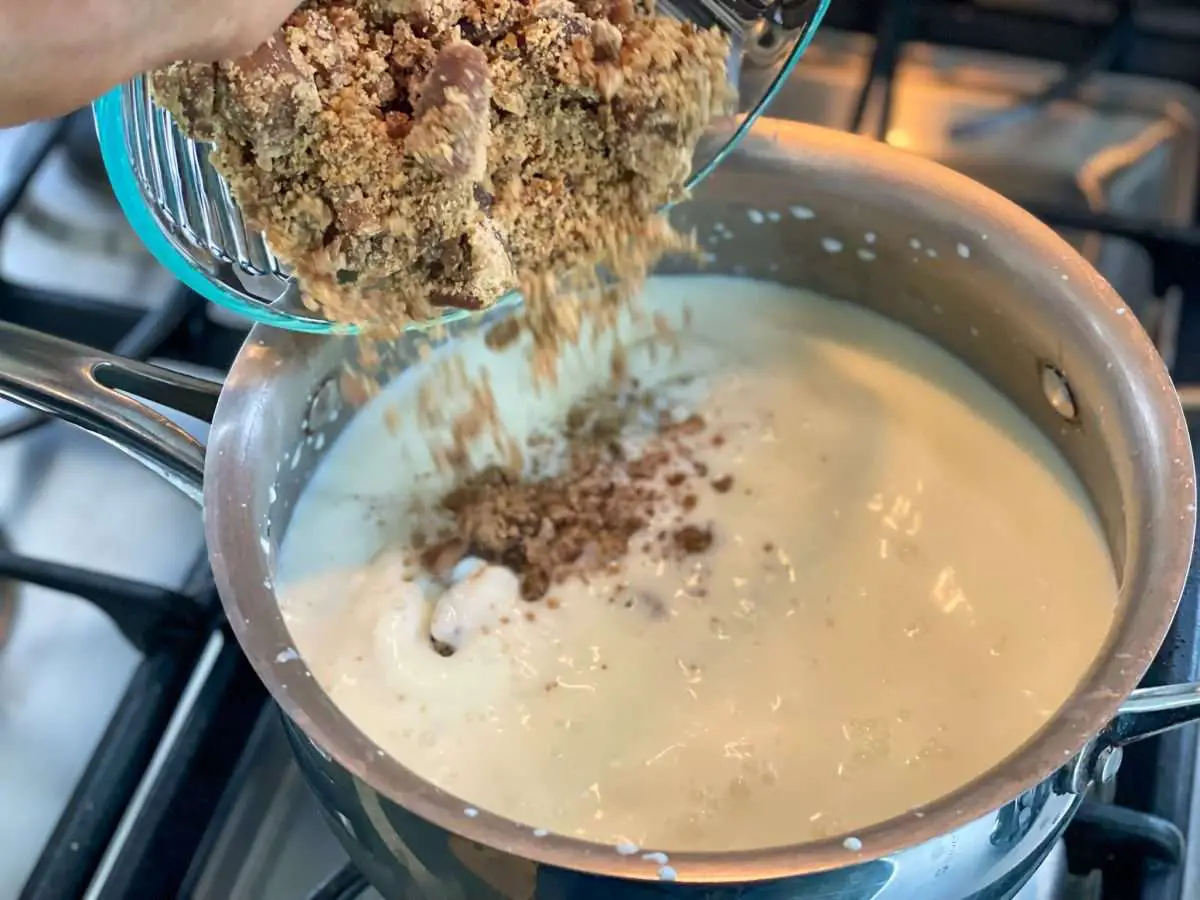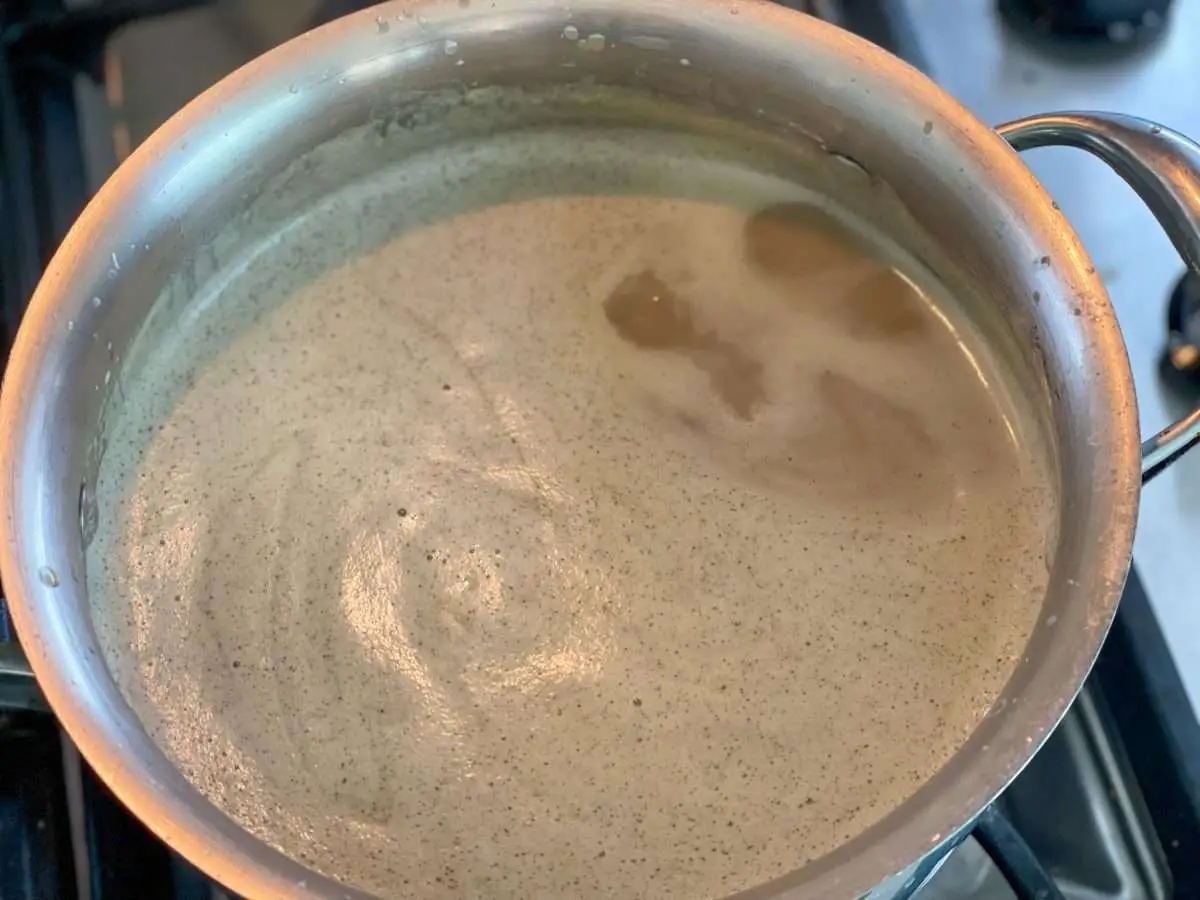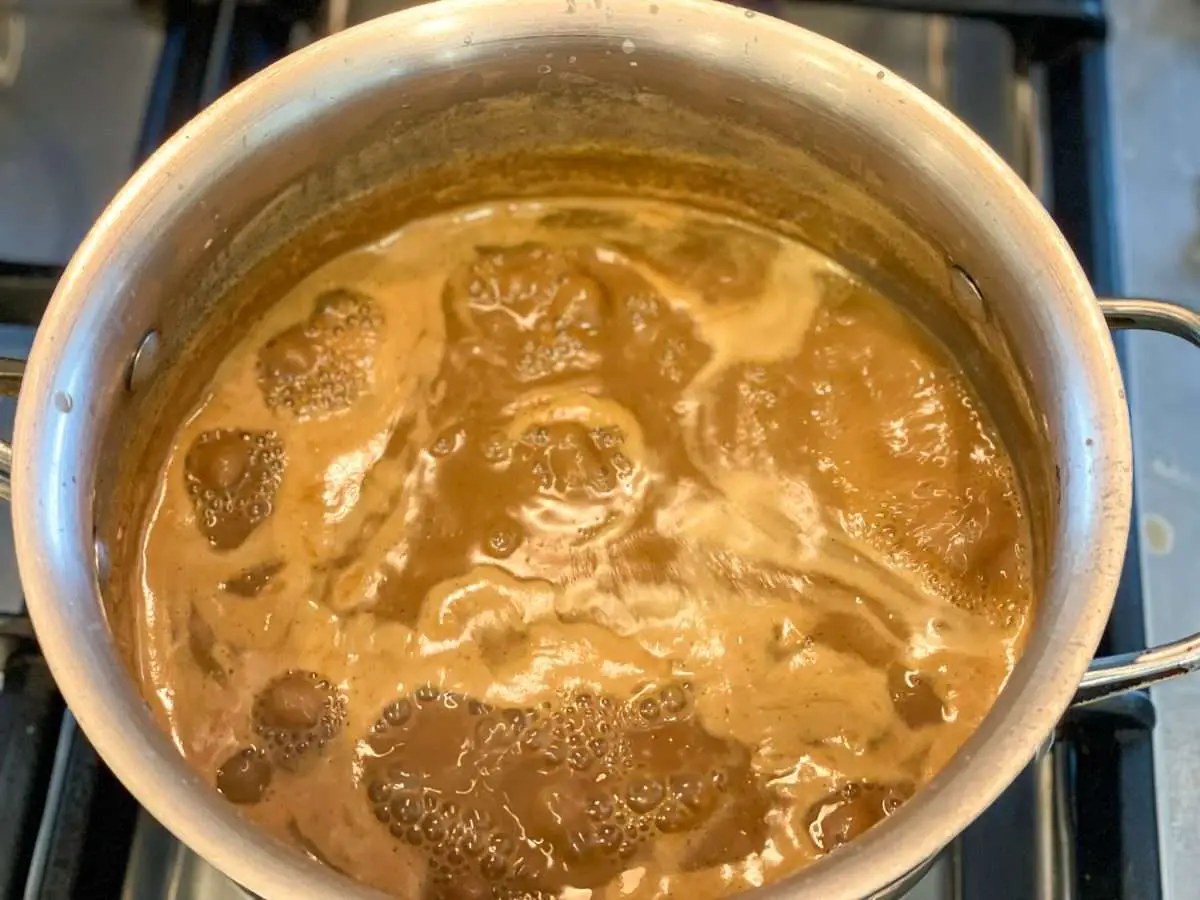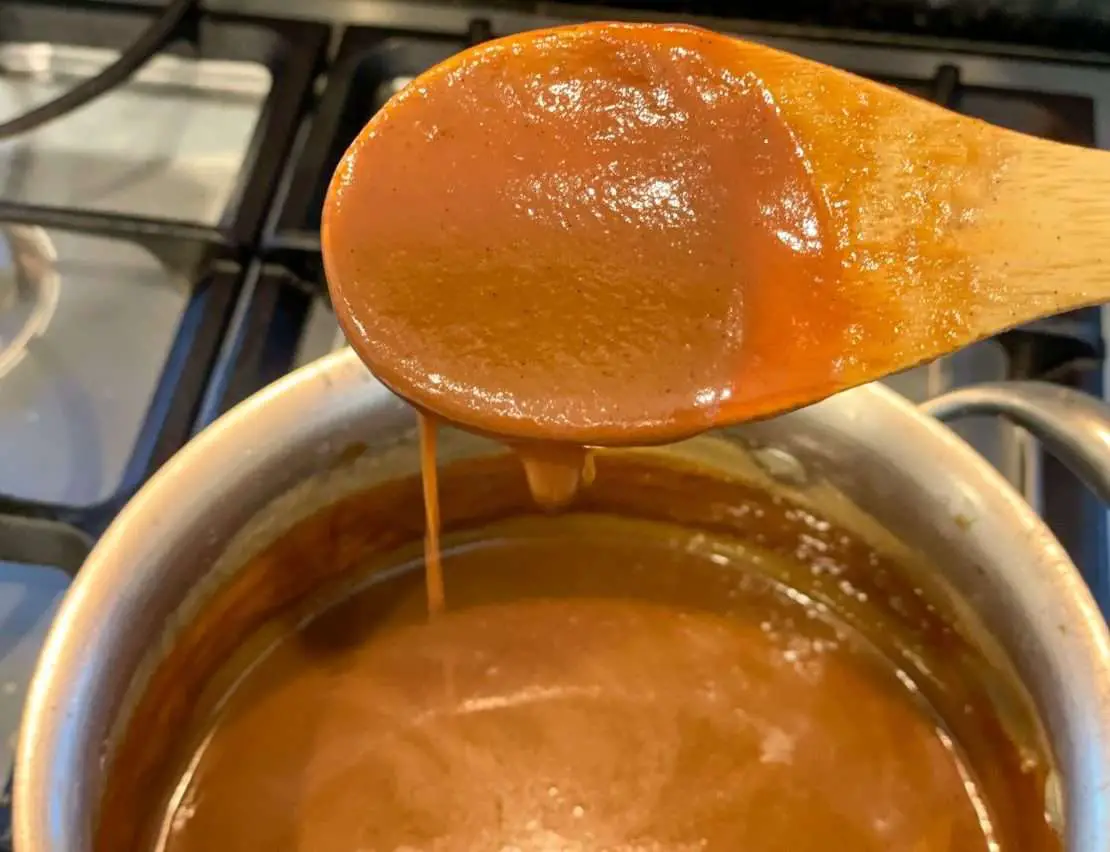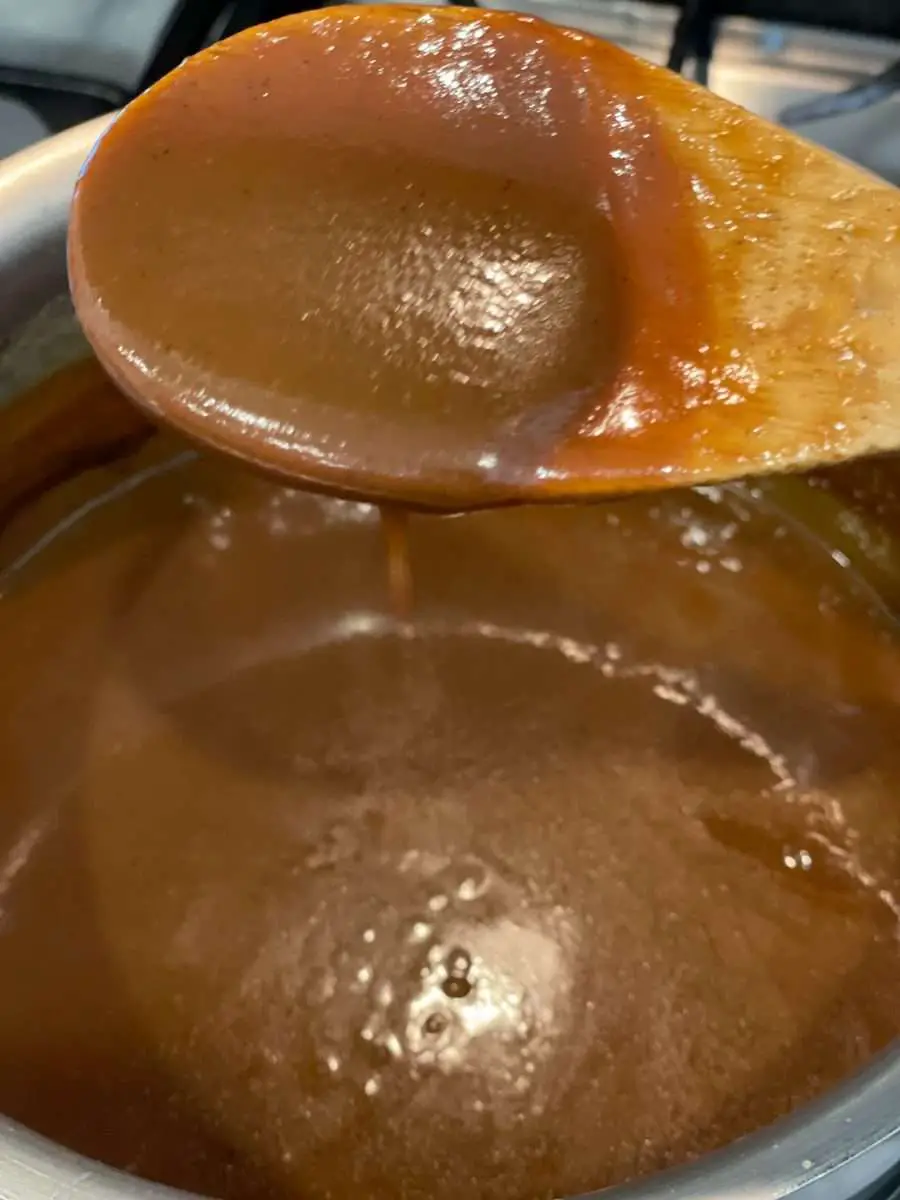Dulce de leche, also known as manjar, cajeta, arequipe, or caramel, is a sweet, thick, and creamy caramel-like spread made from milk and sugar. The name “dulce de leche” literally means “sweet of milk” in Spanish. It is a popular dessert in many countries of Latin America, as well as in Cuba, Spain and Portugal.
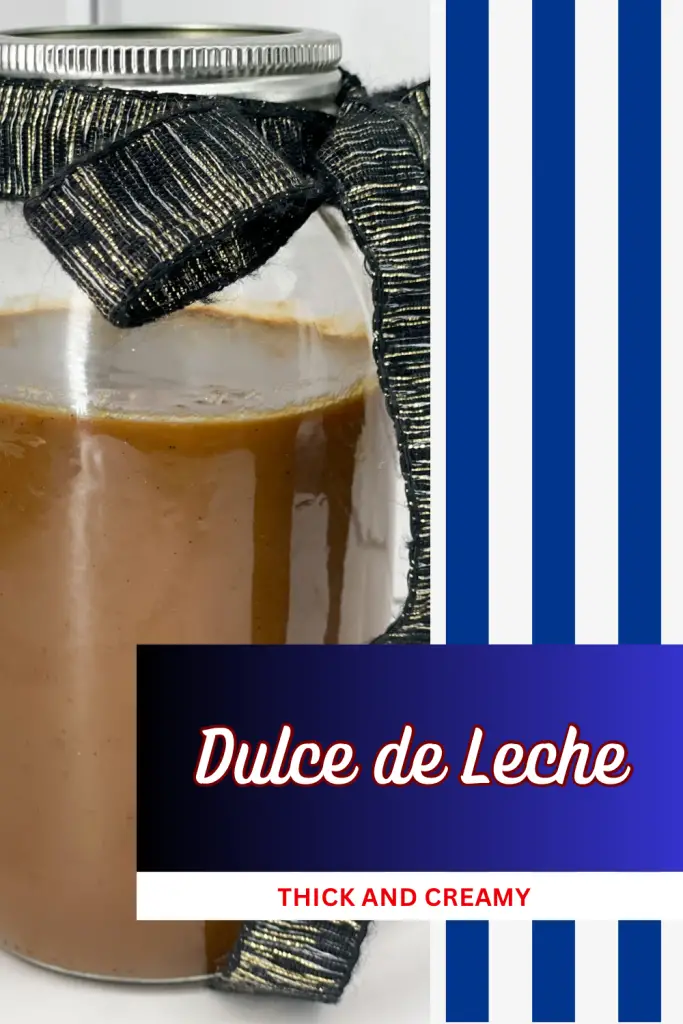
The exact origins of dulce de leche are unknown, but it is believed to have originated in Argentina or Uruguay in the early 19th century. The most common story is that it was accidentally invented by a maid who left a pot of milk and sugar cooking on the stove for too long. When she returned, the milk had caramelized and turned into a thick, sweet paste.
Another story claims that dulce de leche was invented by the French during the Napoleonic Wars. When Napoleon’s army was stationed in Argentina, they ran out of sugar. To make up for this, they started using milk instead, and the resulting caramelized milk became a hit with the soldiers.
No matter how it was invented, dulce de leche quickly became a popular dessert in Argentina and Uruguay. It is now a staple of the cuisine in these countries, and it is also widely enjoyed in other parts of Latin America.
Dulce de leche is made by slowly cooking milk and sugar together until the sugar caramelizes and the milk turns a deep brown color. Vanilla is often added for flavor, and some recipes also call for bicarbonate of soda (baking soda), which helps to prevent the caramel from becoming too hard.
There are many different ways to make dulce de leche, but the most common method is to cook the milk and sugar in a heavy-bottomed pot over low heat. The pot should not be too large, as this will prevent the milk from caramelizing evenly. The milk and sugar should be stirred constantly to prevent them from sticking to the bottom of the pot.
Once the milk has caramelized and turned a deep brown color, the dulce de leche is ready to be removed from the heat. It should be allowed to cool slightly before being transferred to a jar or container. Dulce de leche can be stored in the refrigerator for up to several weeks.
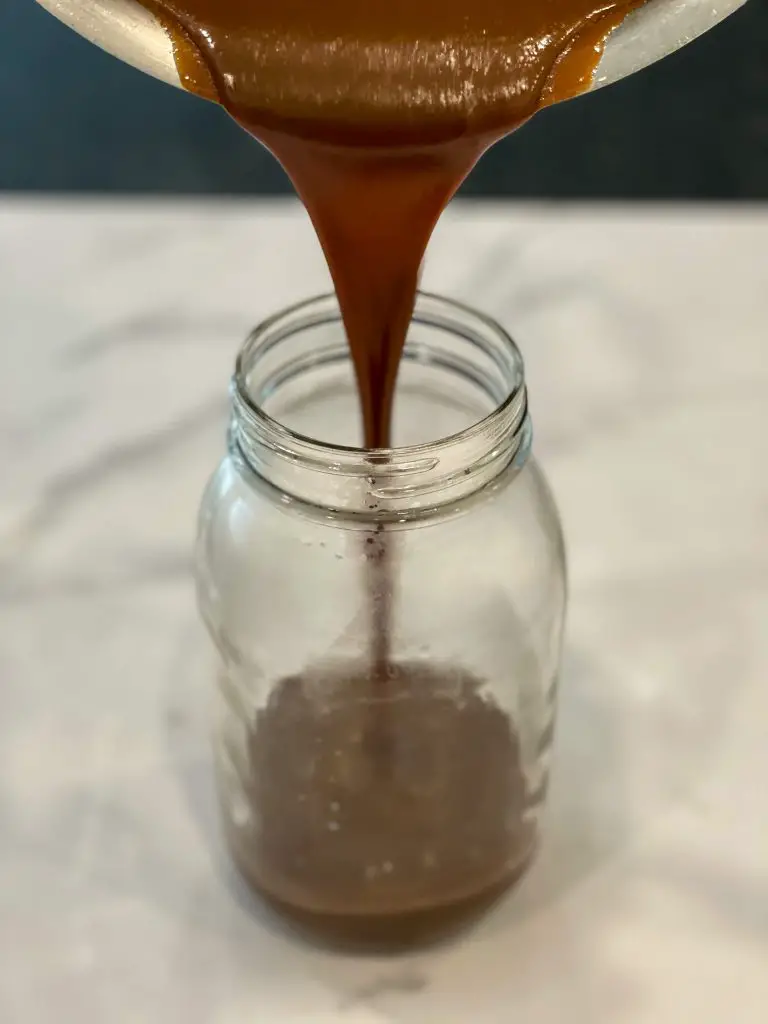
There are many different ways to enjoy dulce de leche. It can be eaten on its own, spread on toast or crackers, or used as a filling for pastries, cakes, and cookies. It is also a popular ingredient in ice cream, milkshakes, and other desserts.
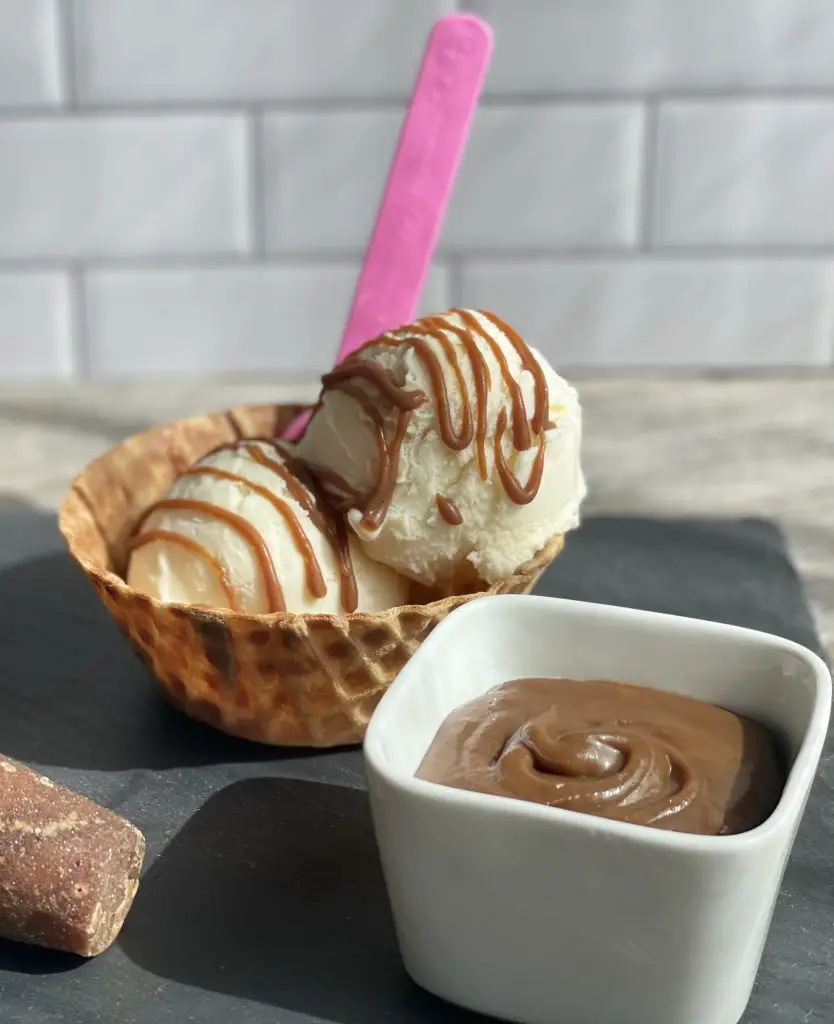
Different kinds of sugar can be used to make dulce de leche, but the most common type is white sugar. Brown sugar can also be used, which will give the dulce de leche a richer flavor. Piloncillo, a type of unrefined cane sugar, can also be used to make dulce de leche. Piloncillo has a strong, molasses-like flavor that gives the dulce de leche a unique taste.
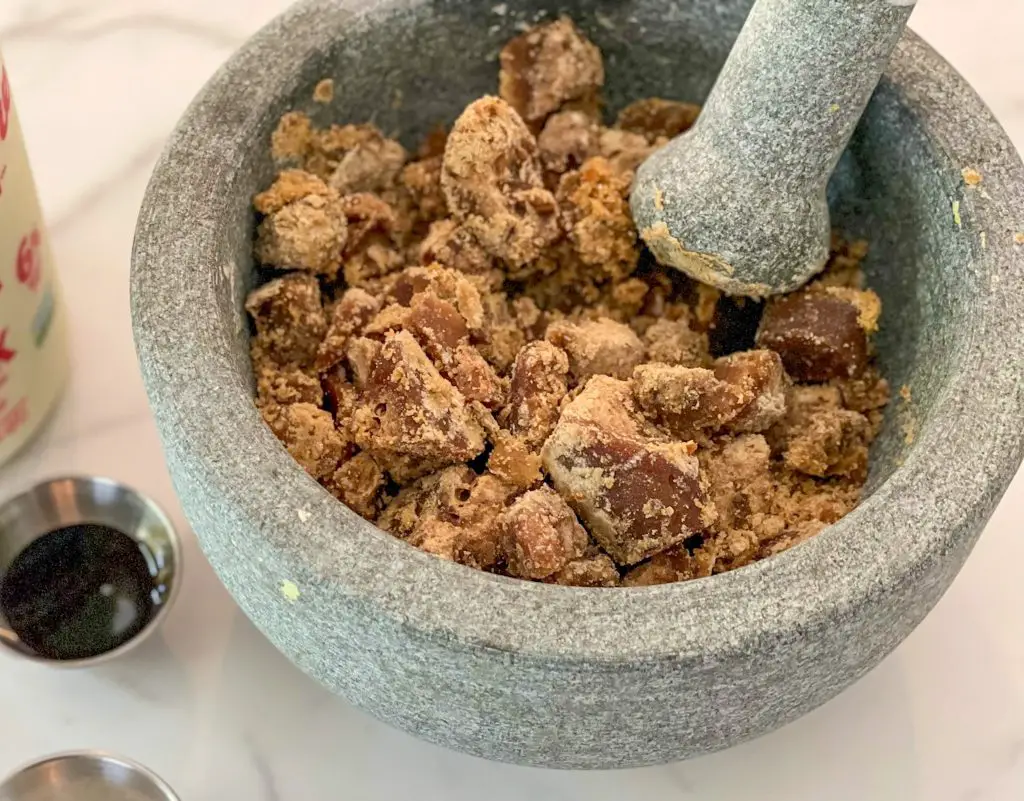
To make dulce de leche with piloncillo, you will need to first break down the piloncillo. I used a mortar and pestle. The resulting dulce de leche will have a rich, molasses flavor that is sure to please.
Dulce de leche is a delicious and versatile dessert that can be enjoyed in many different ways. It is a popular treat in many countries of Latin America, and it is also becoming increasingly popular in other parts of the world. If you have never tried dulce de leche, I encourage you to give it a try. You won’t be disappointed!
Dulce de leche is a popular dessert in Cuba, and it is used in a variety of ways. Here are a few examples:
- As a filling for pastries and cakes. Dulce de leche is a popular filling for pastries such as empanadas, turnovers, and cakes. It is also used as a filling for ice cream sandwiches.
- As a topping for pancakes, waffles, and other breakfast foods. Dulce de leche is a delicious topping for pancakes, waffles, and other breakfast foods. Stir some in your espresso instead of sugar.
- As a spread for toast and crackers. Dulce de leche is a sweet and creamy spread that is perfect for toast and crackers.
- As an ingredient in desserts. Dulce de leche is a popular ingredient in desserts such as flan, cheesecake, and tres leches cake. Use it as a dipping sauce for churros. It can also be used to make milkshakes and other drinks.
In Cuba, dulce de leche is also used in a traditional dessert called dulce de leche cortada. This dessert is made by cooking milk and sugar together until the milk curdles and turns a deep brown color. The resulting dessert is a bit like a caramel pudding, and it is often served with a scoop of ice cream.
I hope you enjoyed this introduction to dulce de leche!
Sharing is FUN…..Below is a Pinterest friendly photo!
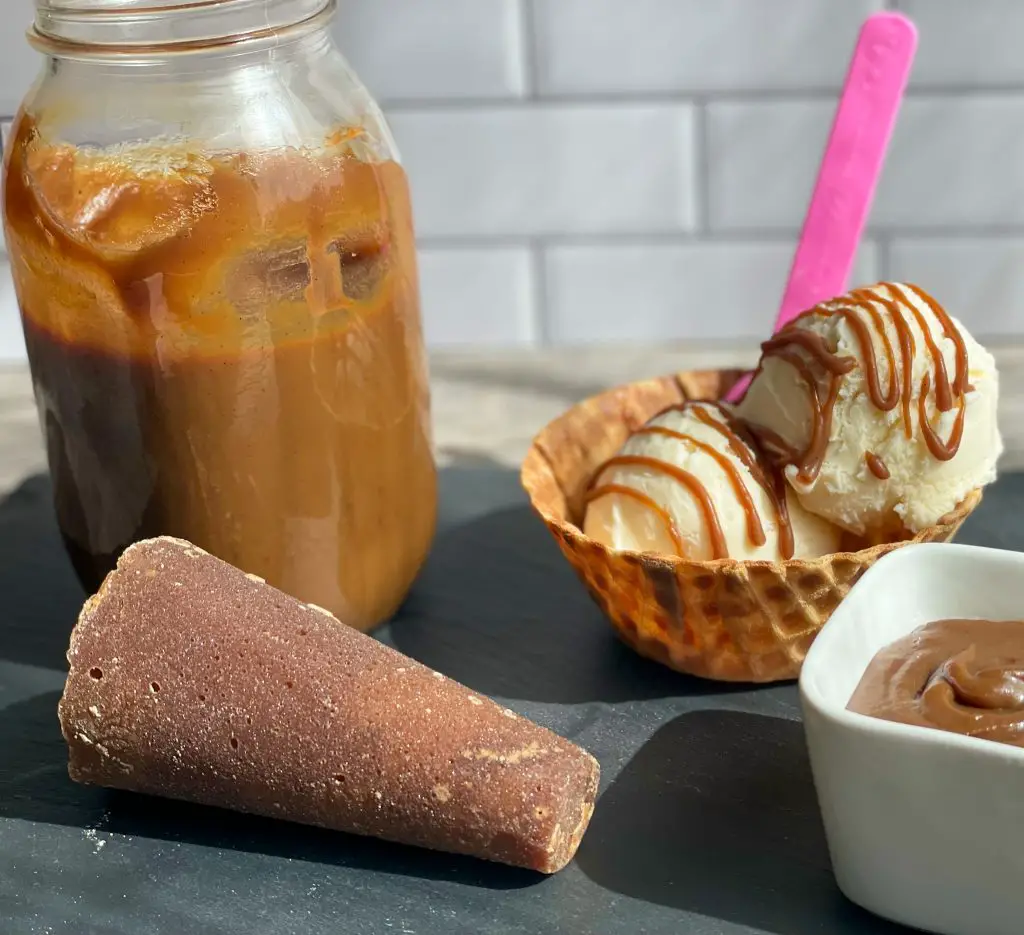
Dulce de Leche
Description
Dulce de leche is a thick, creamy, and caramel-like spread made from milk and sugar. Dulce de leche is made by slowly cooking milk and sugar together until the sugar caramelizes and the milk turns a deep brown color.
Ingredients
Instructions
-
Break up 3 cups of piloncillo. I used a mortar and pestle.
-
In a large sauce pot combine milk, vanilla paste and baking soda. Heat on medium heat. Slowly stir in piloncillo or sugar. Keep stirring and as the milk mixture warms the piloncillo will melt and combine with milk.
-
For the first hour and a half you only need to stir about every 15-20 minutes. Keep the heat on medium and watch for an easy simmer. Let it bubble but not a rolling bubble.
-
After an hour and a half the liquid will start to thicken, reduce and change color. Keep it simmering but not boiling. Adjust the temperature if it starts boiling too rapidly. Stir more frequently to keep the mixture from sticking to the bottom of the pot.
-
After another 30-60 minutes it will really start to thicken and turn a deeper richer caramel color. Start to notice how it sticks to your spoon. If it starts to cling to the spoon it is getting closer to being done.
-
At this point the dulce de leche is done when it is thick and has reduced down the sides of the pot. Instead of being a liquid it will be like a thick syrup. Notice if it envelops the whole spoon front and back. If it takes time to drop off of the spoon when you stir it is done. If will continue to thicken as it cools.
Take it off of the heat and let cool for 30 minutes. Transfer to a glass jar or container.


